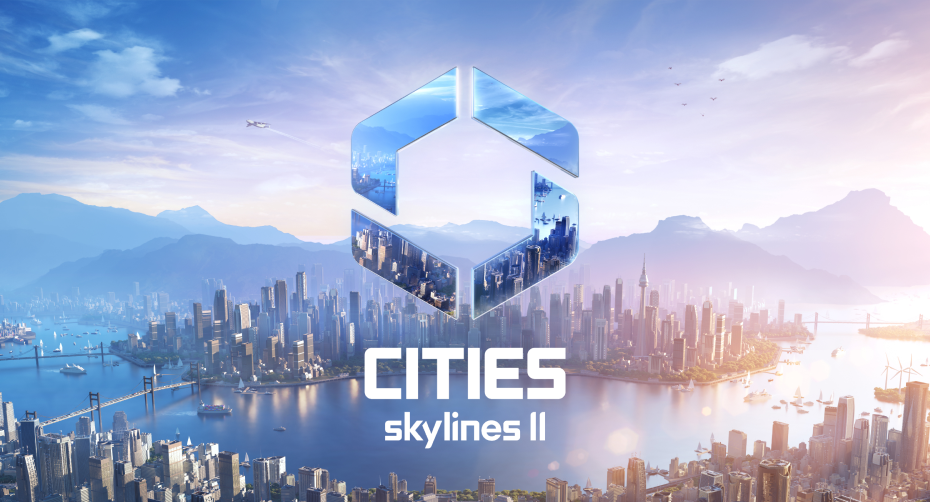If there was a game that I was extremely excited about and looking forward to in 2023, it was Cities Skylines II. My journey with the game went from excitement all the way to disappointment, and it wasn’t a simple journey. As several viewers on YouTube and TikTok constantly ask me what I think about the game release, I’ve decided to put my thoughts together on the game and the franchise, including the current state and what I expect to happen.
Cities Skylines 1 revived the city builder genre by bringing a more modern and fresh take into this category. As a game created by people who are passionate about this genre, the game was quickly embraced by the community, leaving the SimCity franchise quickly behind.
After over eight years of development and improvements, one thing was clear to me: without a modern and up-to-date graphics engine, the game wouldn’t be able to evolve any further. Game mechanics like the traffic AI couldn’t be improved, and new challenges or ways to play the game were impossible. While it lasted, the success formula relied on DLCs for new assets, targeted improvements – like the Financial Districts or the pedestrian-focused Plazas and Promenades – and the possibility of adding mods and assets from creative individuals in the Cities Skylines community.
One of my latest pet peeves with Cities Skylines 1 was that the mechanics for the latest DLCs didn’t actually provide any new challenges and could be ignored entirely in the city without penalties. This again proved that the game had reached its limits and was due for an overhaul.
Then, Cities Skylines II was announced.
SETTING THE SCENE
A stunning, very well-polished announcement trailer was unveiled. It took the viewer on an incredible journey. It started from a shot of a seed germinating, creating the reference to the birth of something new and exciting. Then the camera moves underground and starts following some pipes and cables while they are still forming when, suddenly, it moves upwards until the camera is above ground and shows you the most stunning view you could possibly expect from a city in the distance. It gave me and a lot of viewers in my community goosebumps.
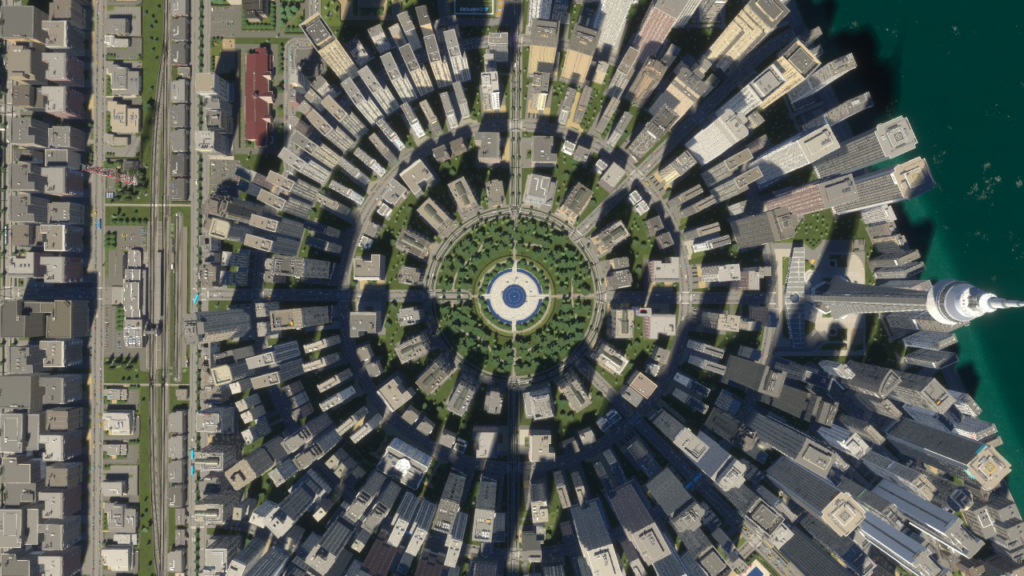
Although the words at the bottom of the video would read “not actual gameplay”, the first image everyone ever had from Cities Skylines 2 was that. Psychologically speaking, our brains made that instant connection that what we saw was what we could expect from the game. Do you remember that famous saying, “First impressions matter”? And that was Cities Skylines’ first marketing move. It was clever but also set the bar extremely high. They would have to meet those expectations somehow.
Then those words fade, and other images start to appear – one more incredible than the other. We were all thinking that if that’s how the actual gameplay looks like, then we’re in to be spoiled. Almost every content creator had a video up in a matter of hours trying to find all the hidden details in that trailer. It was great and gave us some idea of what would come, including seasons.
Seasons was one of the features I heard people asking about at every live stream I did on Cities Skylines 1. Colossal Order again listened to our feedback and hinted at what was to come. The community was in a state of fire. Every conversation, video comment, and Discord message was about the announcement.
The problem with this approach was that the video set some unrealistic expectations, and everyone was hyped for something that wasn’t accurate. Those initial words should’ve stayed there for the length of the video.
Three months later, we finally have the first official gameplay trailer, and it starts with the following words on the screen: “All footage captured in game”. This is important for two reasons. At that point, there was a lot of talk about the images in the first video and what to expect, as they were not realistic. All we were about to see were actually in the game, and this is what we should expect for the release.
Although it was less visually appealing than the first video, it was a massive leap if compared with the first game. We now knew this would be what we would be playing and how it would look: bright cities with a happy vibe, warm sunsets with incredible golden hours. Overall, it is an exciting and vibrant city builder with much better graphics, realistic assets, and what looks like the freedom to create everything we could dream of. As they said in the video, “You make it happen”.
At this point, it’s fair to say that we all had realistic expectations from the game. Even though there was still a lot of speculation, we were seeing what was possible. We just didn’t know the tools that we would have available to make it happen. Not yet…
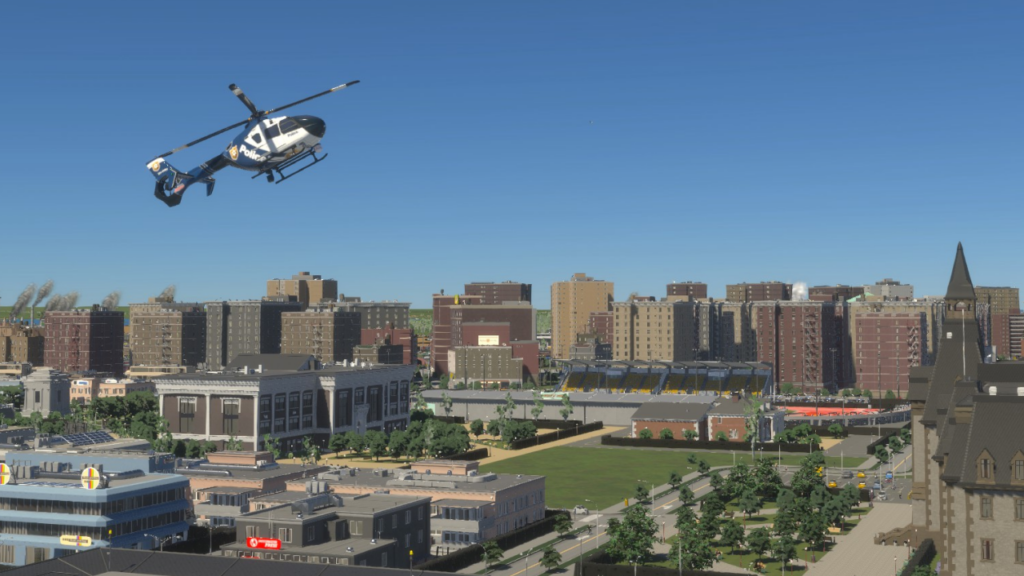
For the following four months, we were offered a constant flow of information about all the tools available in the game. From the Traffic AI to Zoning types and even the Soundtrack, we had a total of 13 Dev Diaries accompanied by the Feature Highlights and Developer Insights (26 videos in total).
As I was participating in the Early Access of the game alongside other great creators, I (and almost everyone else) would also do my own deep dive and analysis of every single diary and video released. We all covered topics that were advertised as genre-defining and an evolution of the first Cities Skylines. Some examples of this were the new Traffic AI, the new Zones and Signature Buildings, the updated City Services, Life Path, and so on. There were just too many good topics and angles that could make your city thrive or fail. And for me, that was a very positive outlook. We could play it our way and deep dive into these aspects if we wished to. The simulation and economy were complex and intertwined, making building a city much more exciting.
The final pre-release stage was the Early Access videos from Content Creators. It had its challenges, and we knew we were still playing on a Beta version of the game, so we were all optimistic about what would come. All our concerns were heard and acknowledged by the developers.
At this point, I must make it clear why all this context matters. Most of the current failings and disappointments of the game come from an overhyped release and a subsequent lack of promised features. Not delivering on something you repeatedly advertise for over four months is a sure way to create some friction in a franchise with so many die-hard fans and exclusive content creators.
RELEASE ISSUES
Just before the release of Cities Skylines II, the first main issue surfaced, affecting all players on the console platform. The game wasn’t ready for its debut and would be delayed for close to six months. All purchases for the platform were refunded, and a significant portion of the Cities Skylines community would have to wait to play the game. In more recent news, it’s clear that the console version has no planned release date and is still facing performance issues.
The minimum specs of the game were also changed after the start of the pre-purchase period, meaning that many players bought a game that didn’t meet their current system and would be unable to play. This would also play a significant role when the game was released, as performance was and is still at the forefront of the discussions.
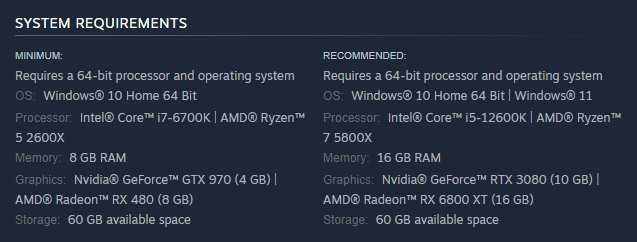
On release day, there were 104,697 concurrent players, according to SteamDB. This was also the all-time peak for the game, as its player numbers have been dwindling since then. As I write this article, the current number of concurrent players is 7,360. The first game currently has 9,157.
The record number during release day, which is double what Cities Skylines 1 ever got in its nine years of existence, didn’t hold for too long as there were just too many issues with the game, and most players decided to wait for fixes before playing it again.
The most reported issue was undoubtedly related to the game’s performance. Most players had problems ranging from meagre frame rates to high-end graphic cards at 100% capacity and even high-end CPUs at 100% capacity. The game wasn’t well-optimised.
Then there were still the graphic issues where the game would be blurry, assets wouldn’t load or be completely black, or even the textures would change mid-game. Even following the workarounds provided by Colossal Order and changing some game settings didn’t resolve the issues.
For those lucky enough to play the game without so many issues, me included, there were several other barriers to overcome. For one, the revolutionary new AI in the game worked worse than the game’s predecessor. Instead of making smarter decisions as it recalculates its route to the destination, it would stop traffic both ways just to make a random U-turn. Although emergency services are meant to find better routes and avoid most traffic rules, it was unable to reach its destination, causing an infinite chain reaction of chaos and nonsense. If that weren’t enough, the Citizen AI would really push the boundaries of what is humanly possible regarding walking from home to work.
Add this to all the other ‘features’ that didn’t work:
- Cargo wasn’t being delivered.
- Mail wasn’t being collected or delivered.
- Public transport was faulty.
- Pollution didn’t have any effects.
- Land value didn’t work.
- All citizens were complaining about high rents.
- Education didn’t work.
And the list goes on…
As a content creator, we sometimes leverage these bugs to create more engaging videos, usually by making fun of them. But to capture those images, we needed to use the in-game cinematic camera, which has a lot of issues as the feature is entirely unintuitive and loses all the adjustments I was making. Even when I was able to create these videos, there were just too many issues at the same time for the game to be enjoyable.
I confess that I was in denial at several points and trying to stay optimistic as the game would be updated and everything would be fixed. But as fixes came, more issues arose, and that state of mind was quickly replaced by disappointment and frustration.
EARLY ACCESS
At this point, one thing was clear to the whole Cities Skylines community: the actual state of the game could only be described as an Early Access, not a full release.
There were too many things broken or missing.
One of the pillars of Cities Skylines has always been the mod support. This allowed the game to be pushed far beyond its limits. Content Creators like Sam Bur and City Planner Plays would put their real-life skills as City Planners into practice with the help of these mods, while Citywokcitywall would build a city on Mars full of customised assets.
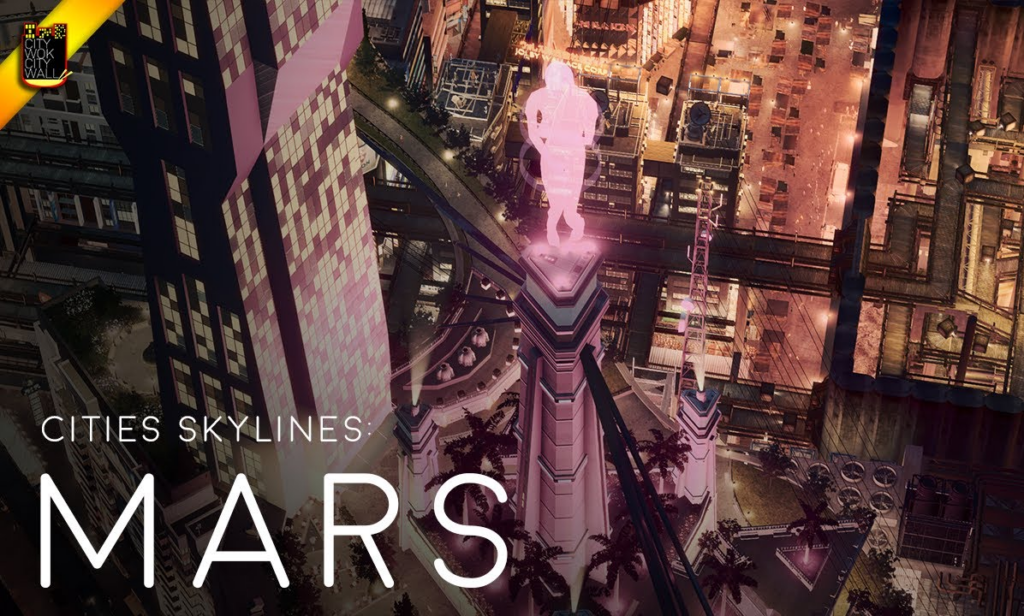
Mods unlock the game’s potential and build on its core mechanics, providing a different way to play and a more engaging experience. It allows experienced players to push the boundaries and build cities that are almost identical to the ones in the real world.
The surprise here is that Cities Skylines 2 doesn’t support mods as it’s still in development with an expected release under Open Beta at some point in March – five months after release. The full release, including the ability to import assets, will only be available “later in the year”.
DLCs and asset packs are also postponed until these problems are fixed.
With so many issues, it’s easy to understand why the community has been so vocal about it. We all want some accountability from Colossal Order regarding the state of the game, alongside some solid fixes and an actual roadmap on what we can expect and when.
If the game were released in Early Access, we would all be happy to join the developers on a journey to achieve the desired state of the game. In a full release, we actually expect it to be great. We know it will have a few bugs as any other software, but the fundamentals should all be there and working as intended.
It’s hard not to mention the release of Baldur’s Gate 3, including their Early Access period, as the right way to approach the release of a game. No wonder it got the Game of the Year Award in 2023. This is what Cities Skylines 2 should have done.
FIXES AND COMMUNICATIONS
I acknowledge, though, that Colossal Order is trying to move the needle on the quality and performance issues of the game. Since the release day, several updates have focused on the performance issues and some bug fixes. However, these were handled in a manner that has been less than ideal.
During one of the “Word of the Week” diaries, Colossal Order’s CEO Mariina mentioned that players shouldn’t expect changes to how the game plays. To that statement, several comments complained that we couldn’t be expected to play a game that doesn’t work, to which the CEO replied “This might not be the game for you”. Although it was later clarified that Mariina was referring to the actual gameplay, not the bugs, the audience – City Skylines players – received this as a hint that the game wasn’t made for the existing fans of the franchise. This just added fuel to the discussion, and the community started to be even more reactive to the messages from the developer on every single platform, including X, Discord, and Reddit.
In a later “Word of the Week“, Mariina calls the community out as having a “growing tendency of toxicity”. Although I also believe that being toxic won’t help in any situation and will mostly only cause harm, in this situation, I see a lot of long-time players of the Cities Skylines franchise trying to be heard and seeking some acknowledgement that things were poorly handled. The community wants accountability and a game they can all enjoy now, not in 10 years.
“We have seen a growing tendency of toxicity in our community, something we have not experienced to this extent before”
Mariina Hallikainen
In the last week of January, the last “Word of the Week” was released with a note saying that Colossal Order will focus on actions instead of words. They also discuss their patch process and announce that they “opted out for a less frequent pace” of releases (Update: it seems that they decided to continue with the “Word of the Week” for now). In practice, this means that all issues still present in the game will make their way to players less frequently. In my opinion, this might increase the frustration and reduce the interest in the game, making it harder for the title to survive.

In terms of the actual fixes that made their way into the game, I’ve noticed that in two instances, the actual fix was to remove the behaviour of the game. When the pedestrians were causing the game to lag because they had extremely detailed models (including the famed teeth), a ‘fix’ was released where most citizens were removed from the simulation, reducing the number of models the game engine had to process. A similar situation happened with the cars when emergency services weren’t able to arrive at accidents and buildings on fire. The ‘fix’ was to despawn the vehicles along the route so the way was clear.
In a game like this, I want to see the actual mechanic behind the simulation working as intended, not a new game already basing the core features on workarounds that make it feel like a downgrade from the predecessor.
CITIES SKYLINES 1 VS CITIES SKYLINES 2
In such a messy situation, gaining some perspective and seeing things clearly can be difficult.
The first thing that needs to be done is to understand what made Cities Skylines 1 successful, which is what the player base expected the sequel to build on.
At the top of the list, we can list mods and assets support. It was closely followed by how diverse the game’s content was regarding assets and mechanics. Small animations like people playing in parks or firefighters actually extinguishing a fire also added a lot and helped it to feel like an actual city. Finally, although not perfect, the core mechanics of the game were working as intended – education, economy, and services.
In a simple direct comparison, for me, the original game almost always wins in terms of which one did it better:
Cities Skylines 1
- Traffic management and behaviour
- Citizens AI
- Variety of Assets
- Mods
- Night Mode
- Animations
- Depth of Content
- Industry mechanics
- Education
- Economy
- Water mechanics
Cities Skylines 2
- Screenshots
- Music
REPLAYABILITY
As I always do when I play new games, I reviewed Cities Skylines 2 on my YouTube channel. But I waited for several updates before I actually managed to create that video. I had to record it several times for it to make any sense. The review was only focused on the state of the game and whether I recommended it.
After some time, I now understand why it was so hard to put what I experienced during the release of this game into words. One of the causes of my discontent was the weather system. Imagine you are playing a game to have some fun and get your mind out of your daily problems, and as you go into it, everything looks grey, makes you feel lethargic, and finally makes you depressed. That’s what Cities Skylines 2 weather system looks like and does to many people I’ve spoken to.
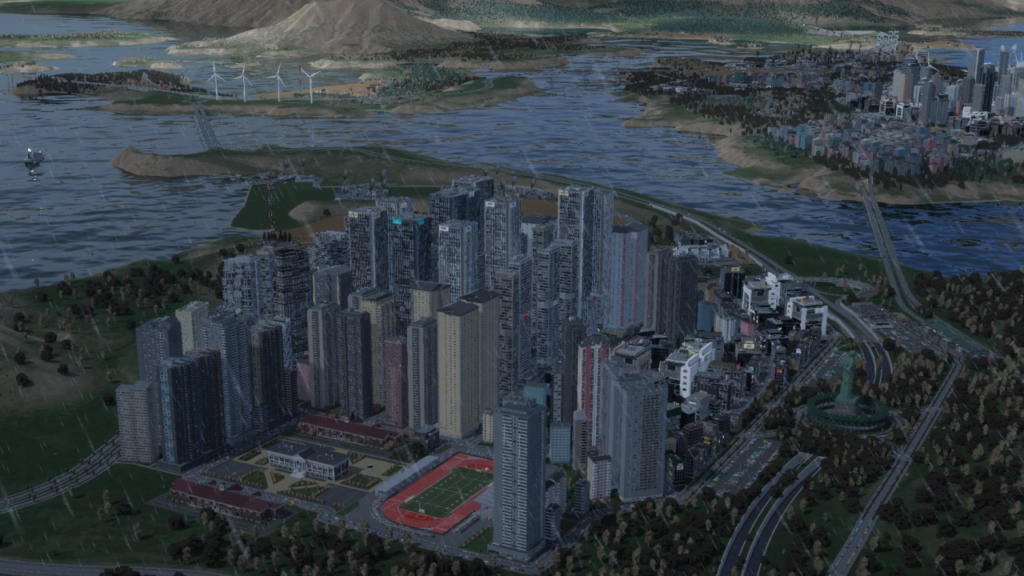
Depending on the map you choose to play, it rains 9 out of 12 months. Non-stop. The city looks dark and without colour. I don’t want to feel like that, and I can’t feel energised to record a video to my audience feeling that way. Seasons also play a part in this, as Winter is very pale compared to Summer (if it’s not raining).
Add this to the very limited number of assets in the game, like the high-density buildings and the lack of animations. Everything just looks the same.
In Cities Skylines 1, I’d be keen to create a new city on a new map to try different ways of building things or use a different asset that I haven’t used that much. In Cities Skylines 2, once you played it once, you played it all.
As if that wasn’t enough to make you stop playing the game, you also face so many bugs and mechanics that don’t play any role in the game economy. Everything just feels like noise. You don’t need to worry about parking, taxes, public transportation, recreation, or most features available. Whether they’re working or not, they’re probably not affecting your city’s behaviour.
THE FUTURE OF CITIES SKYLINES 2
Cities Skylines II has several issues, from the game mechanics to the company’s communications with its supportive community.
In the actual state of the game, there’s no easy way out of it. A lot of work must be done before we can all enjoy what was meant to be the next generation of the city builder genre.
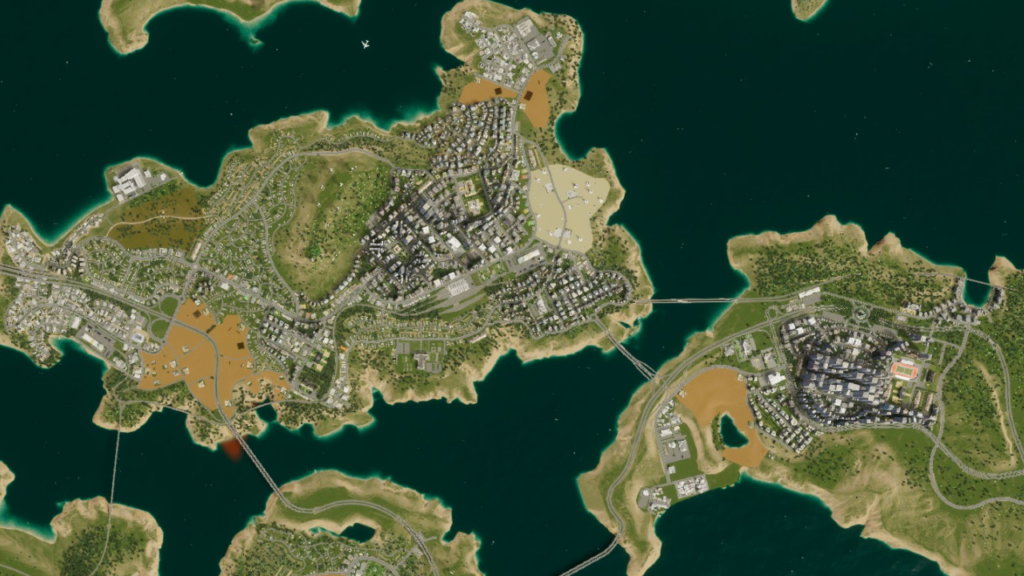
Due to Colossal Order’s reputation with the first Cities Skylines game, they will have a chance to recover. I believe the community will allow that to happen. As City Planner Plays said in his recent interview with Engadget: “Prior to the Cities: Skylines II release, I think that most everyone in the community viewed them incredibly positively, looking at them as ‘one of us’ and the type of developer that you want making a game that you love. They were viewed as responsive and generous. I can’t recall a bad thing being said about them.”.
At the end of this year, we should see the full release of the mod support alongside the game’s console version. This will be a start. But we shouldn’t wait that long for the game mechanics to be fixed. It’s not the job of modders to fix the game. If it’s not done, the doors for any other city builder franchise are wide open to take the crown from Cities Skylines.
This article was first released on my Patreon on Early Access. Please check the link below to help support the channel:

